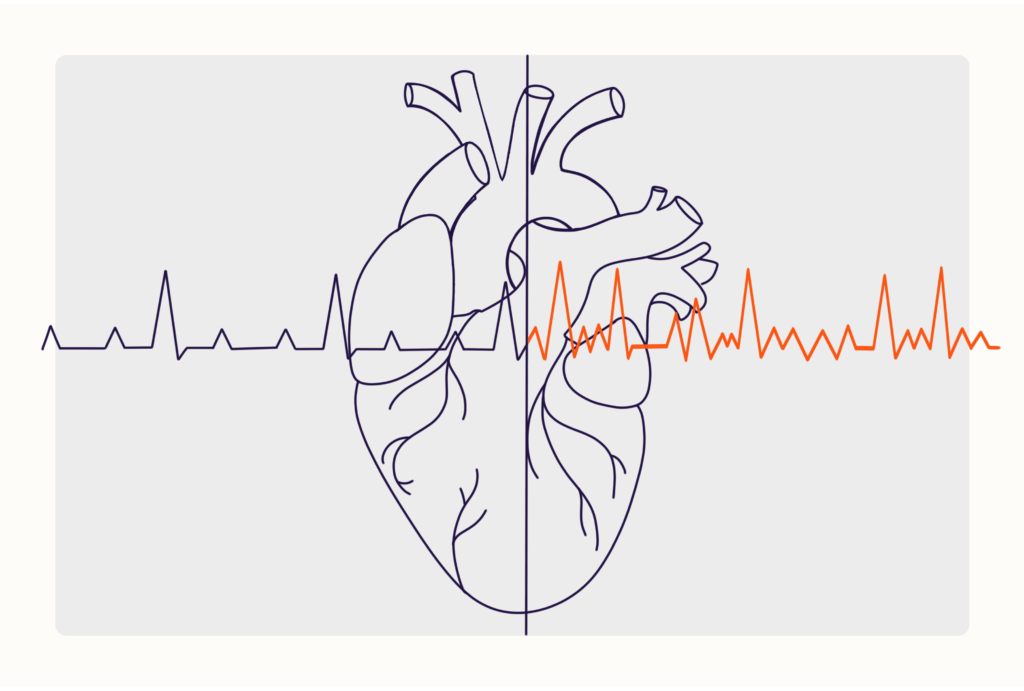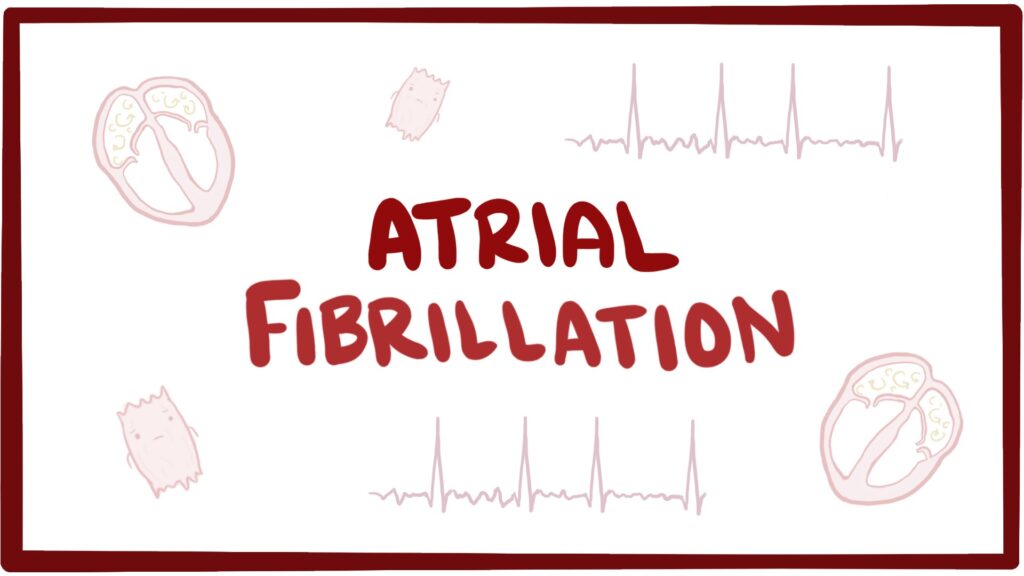
Introduction to Atrial Fibrillation (A-Fib)
Atrial Fibrillation, commonly known as A-Fib, is a heart condition that has been around for ages. Yet, in 2024, it seems to have gained more attention than ever before. With rising numbers of cases reported across the globe, many are left wondering why this ‘old’ heart condition is suddenly becoming so prevalent. Is it just a coincidence or does our modern lifestyle play a significant role? As we delve deeper into the alarming trends surrounding A-Fib, understanding its roots and implications becomes essential for safeguarding our health and well-being. Let’s explore what’s driving this surge and how you can stay informed about your heart health amid these changes.
Alarming Trends: An Increase in A-Fib Cases

In recent years, the rise of Atrial Fibrillation (A-Fib) has become a pressing public health concern. Data from various studies indicate that cases are spiking alarmingly in 2024.
Health experts observe that this heart condition is no longer confined to older adults. Younger populations are increasingly affected, shedding light on a trend that demands attention.
Alongside lifestyle changes and increased stress levels, factors such as obesity and sedentary habits contribute significantly to this surge. More people face potential complications associated with A-Fib than ever before.
Moreover, delayed diagnoses further exacerbate the situation. Many individuals remain unaware of their risk until symptoms escalate into serious health crises.
The growing prevalence highlights an urgent need for awareness and preventive measures within communities everywhere. As we unravel these trends, it becomes evident that proactive steps can make a significant difference in combating this alarming heart condition.
Understanding the Causes of A-Fib
Atrial fibrillation, commonly known as A-Fib, arises from a variety of underlying factors. Understanding these causes is crucial for managing this heart condition effectively.
Heart diseases such as hypertension and coronary artery disease can lead to A-Fib. They create strain on the heart’s structure, disrupting its normal rhythm.
Additionally, lifestyle choices play a significant role in triggering this condition. Excessive alcohol consumption and prolonged stress are key contributors that many overlook.
Obesity also increases the risk, creating additional pressure on the heart and leading to electrical disturbances within it.
Moreover, genetic predisposition cannot be ignored either; family history may heighten one’s likelihood of developing A-Fib later in life.
Infections or inflammation can irritate the heart muscle too. This irritation often leads to sporadic episodes of atrial fibrillation that might catch individuals off guard.
Who is at Risk for Developing A-Fib?

Atrial fibrillation (A-Fib) doesn’t discriminate; it can affect a diverse range of individuals. However, certain factors significantly elevate the risk.
Age plays a crucial role. Those over 65 are particularly vulnerable to this heart condition in 2024. As we age, our heart’s electrical system can become erratic.
Pre-existing health conditions also contribute to A-Fib risks. Heart disease, hypertension, and diabetes create an environment where A-Fib can thrive.
Lifestyle choices matter too. Excessive alcohol consumption and smoking increase susceptibility. Poor diet and lack of physical activity further heighten these risks.
Family history cannot be overlooked either. If relatives have experienced A-Fib, you might face a higher likelihood as well.
Understanding these factors is essential for awareness and early detection in combating this alarming trend affecting more people than ever before.
Symptoms and Diagnosis of A-Fib
Atrial Fibrillation (A-Fib) can manifest through various symptoms, some of which may be subtle or easily overlooked. Patients often report a sensation of fluttering in the chest, known as palpitations. This irregular heartbeat can leave individuals feeling anxious.
Other signs include fatigue and weakness that linger even after rest. Some people experience dizziness or lightheadedness, especially during physical activity. In severe cases, shortness of breath might occur, making everyday tasks feel daunting.
Diagnosing A-Fib typically involves an electrocardiogram (ECG), which records the heart’s electrical activity. Physicians might also recommend a Holter monitor for continuous monitoring over 24 hours or longer to detect intermittent episodes.
Blood tests and imaging studies may help rule out other conditions contributing to these symptoms. Early detection is crucial for effective management and preventing complications associated with this common heart condition in 2024.
Treatment Options for A-Fib
Treatment for atrial fibrillation (A-Fib) varies based on the severity of the condition and individual patient needs. Medications such as anticoagulants are commonly prescribed to reduce stroke risk. Beta-blockers or calcium channel blockers may also be used to manage heart rate.
For some, electrical cardioversion can restore a normal heartbeat. This procedure uses controlled shocks delivered to the heart through paddles placed on the chest.
Catheter ablation is another option for those seeking a more permanent solution. It involves destroying small areas of heart tissue that contribute to A-Fib.
In certain cases, doctors might recommend lifestyle changes alongside medical treatments. Weight loss, reduced alcohol consumption, and regular exercise can significantly improve outcomes.
Each treatment plan is tailored specifically for patients, emphasizing their unique health profiles and personal preferences in managing this heart condition 2024.
Prevention and Lifestyle Changes to Reduce the Risk of A-Fib
Making simple lifestyle changes can significantly reduce the risk of developing atrial fibrillation. A balanced diet is essential. Focus on whole foods, including fruits, vegetables, and lean proteins. Reducing processed foods and added sugars promotes heart health.
Regular exercise is another key factor. Aim for at least 150 minutes of moderate activity each week. Activities like walking, cycling, or swimming improve cardiovascular fitness and help maintain a healthy weight.
Managing stress effectively plays a crucial role as well. Techniques such as yoga or meditation can lower blood pressure and enhance overall wellness.
Limiting alcohol intake also matters. Excessive drinking may trigger episodes of A-Fib in susceptible individuals. Try to keep your consumption within recommended guidelines.
Regular check-ups with healthcare providers ensure that any underlying conditions are monitored closely, paving the way for timely interventions when needed.
Conclusion: The Importance of Early Detection and Treatment for Atrial Fibrillation
Atrial Fibrillation, or A-Fib, is a heart condition that has been gaining more attention in 2024. With the alarming rise in cases, understanding its implications becomes crucial. Early detection of this irregular heartbeat can significantly influence treatment outcomes and overall quality of life.
Addressing A-Fib promptly allows for better management of symptoms and reduces the risk of serious complications like stroke or heart failure. It’s essential for individuals to be aware of their own health markers and seek medical advice if they experience any concerning signs.
The role of lifestyle changes cannot be understated either. Simple adjustments such as maintaining a healthy diet, regular exercise, managing stress levels, and avoiding excessive alcohol consumption can play a pivotal role in prevention.
As awareness grows around this prevalent heart condition 2024 presents an opportunity for individuals to take charge of their cardiovascular health actively. By educating ourselves about the risks and encouraging timely medical intervention when necessary, we contribute to reducing the impact that A-Fib has on society at large.
Read up more about A-Fib here. Visit QAWire for more health news.


